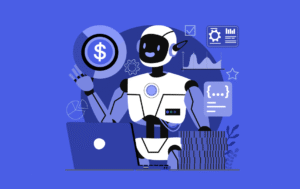Because it made explicit what many in the social media marketing industry have known for a very, very long time: namely, that social media platforms are a joke, that their valuations are based on fictitious users, and that their integrity lies somewhere between Lucifer and that guy who eats people’s faces in movies.
Since many of us, including me as a marketing consultant, don’t trust the stats, suggesting popular social sites like Facebook, Twitter, and Instagram has become more and more challenging.
Why should we, too?
Based on the activity of user accounts, internal corporate data is used to create the figures for our key metrics, such as our daily active users (DAUs), monthly active users (MAUs), and average revenue per user (ARPU). Although these figures are based on what we consider to be accurate projections of our user base for the relevant measurement period, there are inherent difficulties in estimating how our products are used by sizable online and mobile audiences globally.
The world’s most prominent data management organization admits it is unsure of how reliable its figures are. Estimates? Who wants estimated results after the fact in marketing?
Things worsen. Italics my
We project that 10% or more of our global MAUs in the fourth quarter of 2017 may have been made up of duplicate accounts. Compared to more developed economies, we think the rate of duplicate accounts is significantly higher in developing markets like India, Indonesia, and the Philippines. We think 3-4% of our global MAUs during the fourth quarter of 2017 may have been made up of fraudulent accounts.
Think about that. Facebook acknowledges that “about” 10% of its monthly active members are fictitious. Yet, they mysteriously don’t say what proportion of their daily active users are fraudulent.
The issue with the Best SMM panel is this. You no longer distinguish between the areas.
For a while, social media wasn’t real.
We take pride in accuracy as marketers and advertising. In the ancient days of marketing and advertising, we were fixated on TV show ratings, print promotion readership, and direct mail delivery success rates.
The current platforms were rigorously verified in every instance. Moreover, because there was typically a point of review for the statistics, you could reasonably predict the audiences for any given media or channel.
Given the longevity of traditional media outlets like radio, TV, and print, it was possible to examine the success or failure of specific campaigns using thousands of case studies. In addition, it was simple to determine what media mix and budget worked and what didn’t because these mediums were public records.
As a sector, we could quickly develop benchmarks for success based not only on our individual experiences but also on the collective results of extremely transparent initiatives that were made available for everyone to analyze.
Well, social media threw all of that out the window.
The stats for Facebook, Twitter, and Instagram were always a joke.
In the past, a company’s value was determined by its revenues, assets, human capital, and performance.
That changed when the idea of “daily active users” was developed.
In a way that we’ve never seen before, the competition to attract users became the driving force behind social media sites. The drive for user growth has now made advertising and marketing fraud possible on a scale that was previously unthinkable.
Let’s be clear: any platform that enables users to make countless false personas so others can purchase likes, followers, retweets, or shares is poisonous to both marketers and brands.
I realize that the word “allows” performs some functions in that sentence, so allow me to elaborate.
Regardless of what I think of them, I doubt I’ll get many objections if I claim that some of the most popular social media platforms on the planet are also among the most technologically advanced businesses. As their entire business models depend on their ability to crunch figures, facts, and esoteric pieces of data millions of times per second, they have -arguably- some of the best AI available.
They are also enormous enterprises with armies of IP bulldogs and attorneys ready to defend their brand from unfriendly outside forces.
Therefore, please explain to me how it is still possible to buy Facebook likes, Twitter followers, or Instagram admirers despite everything we have seen in the news.
Because it was always a con, and like everyone else, we were duped.
What does it matter if your users are fake or not if your business is valued on the number of users you have and the activity those users have on your platform? If you did, you would employ a horde of auditors to guarantee the reliability of your user base. They have never done this, and I don’t think they ever will.






